
There’s never been a better time to create the home of your dreams - let us help at Build It Live!
Claim your two free tickets here!
There’s never been a better time to create the home of your dreams - let us help at Build It Live!
Claim your two free tickets here!Garden design is an important part of any self build project, but it’s not unusual for the garden or landscaping to be an afterthought. There is merit in a tandem approach, however.
“Designing a house and garden together creates a more harmonious living environment. An integrated approach strengthens the character of the site, using a consistent palette of materials to blur the boundaries between indoor and outdoor spaces, with the garden forming an outdoor room,” says Robert Myers, landscape architect and director of Robert Myers Associates. “Your house’s architectural style will often set the tone for the garden layout and detailing. The materials and colour palette can influence elements such as paving, plant selection, and outdoor furniture.”
By planning the spaces together and taking a proactive approach to garden design, you can also achieve good indoor outdoor flow. Hiring a garden designer in line with your build team means windows, doors and other glazing can be positioned with views, access points and lifestyle needs factored in.
“Clients are increasingly in search of outdoor spaces that take on similar functions to those once preserved for the house,” says John Law, creative director for interiors at Woodhouse & Law. “This can be outdoor kitchens or a pared-back bar and stools that doubles up as a space for those wishing to work outside on their laptops.”
When setting a garden design schedule, there are practical benefits to planning landscaping in parallel to a build – the construction is contained to a single timeframe and upheaval happens all at once, while access and tasks can be coordinated and prioritised. Professional landscapers work year-round, but certain jobs such as brickwork and paving cannot be done in very wet or cold conditions.
As well as the architecture, look to the surrounding areas – both immediately outside of your house and the wider landscape – as a starting point for your garden design. “Create a sense of repetition,” advises Robert.
“If you have rounded trees in the surroundings, repeat this with rounded shrubs as well as trees. This will soften the boundary between garden and wider landscape. If you have the luxury of expansive, naturalistic views beyond the garden then you can borrow these as a backdrop, making sure that these views are as visible as possible – maybe framing them as part of your garden’s design – so that your own outdoor space feels part of a larger setting.”
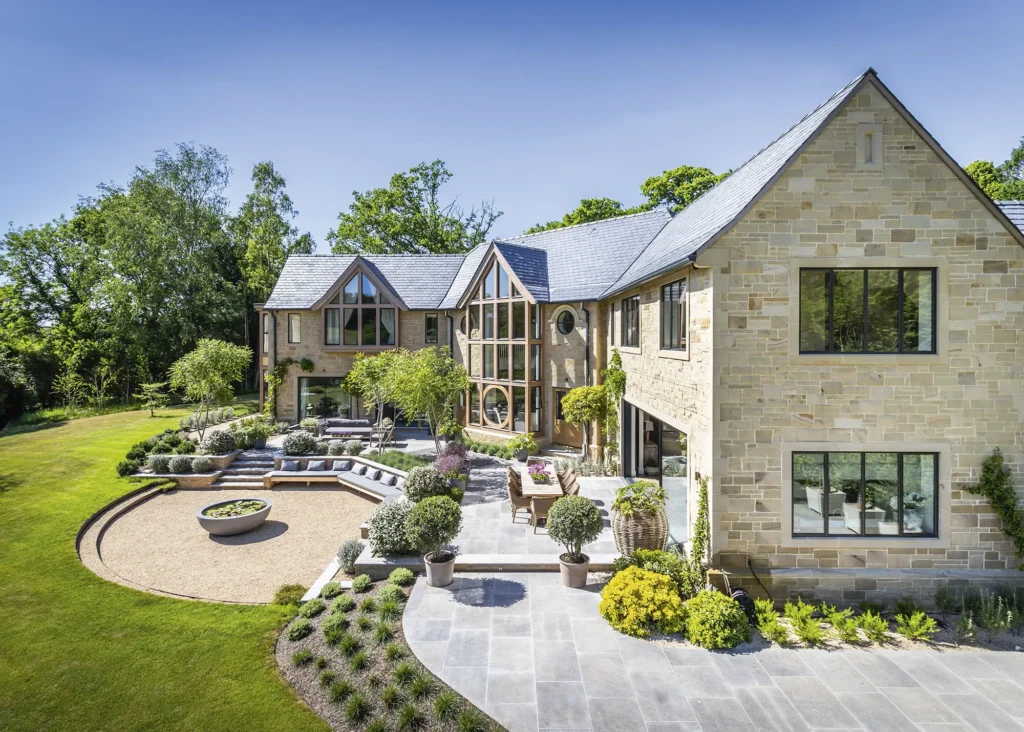
The exterior of this property was created by Claire Merriman Garden Design to include zones for relaxing, dining and soaking up the sun. Kimmeridge limestone paving, £125 per m² from Artisans of Devizes, enhances the stone facade of the building and is complemented with Amaya tumbled limestone flooring in the kitchen, providing a good flow from inside to out
If the surrounding landscape isn’t appealing, make the boundary a feature of the garden design in itself. Look at materials used for hardscaping, particularly if there are historic or characterful properties nearby, and reflect this in your brickwork, paving, driveway and other stonework.
Interiors can offer garden design inspiration, too. “We often use a floor finish internally that complements the materials used in the garden,” says John. “Many types of limestone can be used inside and out with the right treatment. This can help unify the spaces. Where this isn’t possible, a material in a complementary tone can be successful. Millboard, for example, offers a wide range of composite timber-effect boards that can sit well with carpet, stone and timber flooring for interior schemes.”
Colours used inside can be echoed in your garden design through planting, pots, decorative pieces and outdoor furniture and vice versa. CorTen steel beds can mirror bronze kitchen handles or frames, rather than larger features.
EXPERT VIEW The importance of plot surveysArchitect Julian Owen sets out what you need to know about undertaking a plot survey as part of your garden design Kick off your project by getting to know the landscape intimately. In the case of a simple, fairly level site, you may feel confident enough to take some measurements and prepare your own sketches. However, there is no substitute for a professionally prepared site survey. This comes complete with spot heights accurately detailing all the existing features, including boundary fences, raised beds and manhole covers. These drawings can be used as a basis for the house design, as well as the garden. An assessment of the acidity and water content of the soil will also give clues as to which plant species will thrive. Arm yourself with a good source of reference to study the existing foliage for clues. You could also take a scientific approach and send samples away for analysis. Waterlogging issues can be corrected by introducing land drains at the same time as installing the house’s underground services. Alternatively, the presence of water close to the surface can be turned into a virtue by adding ponds and raising beds to keep less tolerant plants dry. |
“Views into the garden can be important in creating a sense of retreat and privacy,” says James Scott, managing director and principal designer at The Garden Company. Consider the positioning of glazing to maximise the vistas and factor in the internal layout, too. You may like to overlook the garden while at the kitchen sink or enjoy an indoor-outdoor feel from the dining table, particularly where sliding doors open up to a patio.
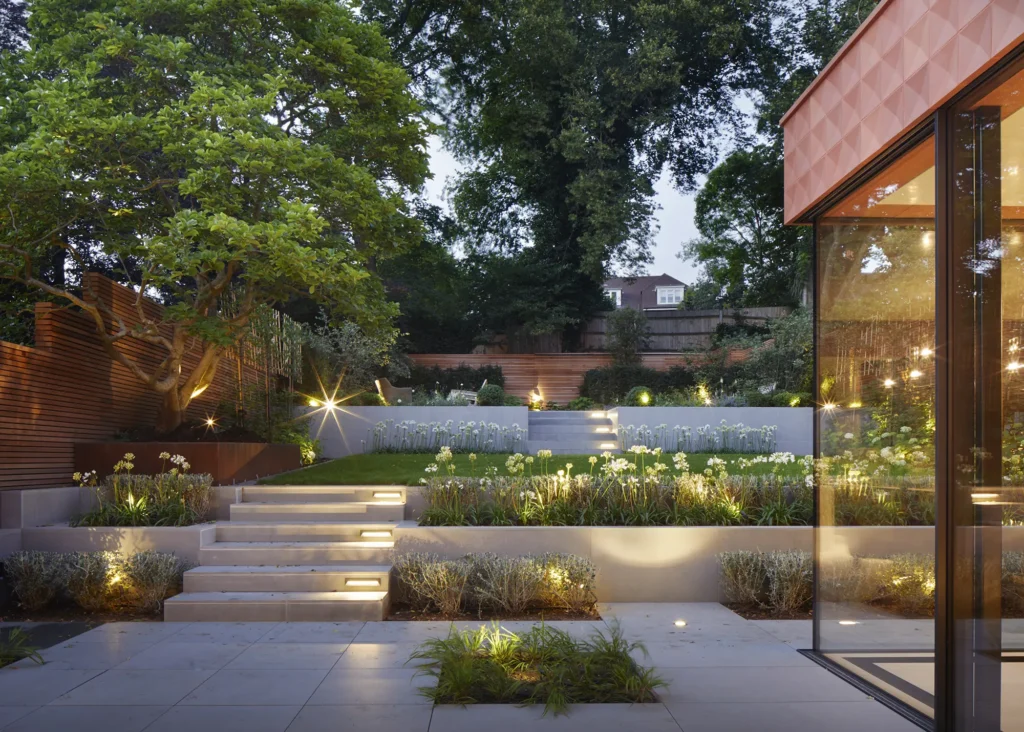
Garden, architecture and kitchen design work in harmony in this extended property where a focus on indoor-outdoor living was a key driver for the project. The extension was designed by Marek Wojciechowski Architects and built by New Wave London with a kitchen by Halcyon Interiors
“A common pitfall is placing garden furniture immediately across the main entrance into the outdoors, creating a barrier – visually and practically,” says James. “Instead, a furnished terrace set deeper in the garden creates a focal point and entices people out further.” Don’t discount views of the house when in the garden. “Especially on the approach along a drive where the picturesque technique of concealment and surprise is often effective,” says Robert.
CLOSER LOOK Incorporating a green roof into your garden design
Above: Oliver Leech Architects have transformed this Victorian house, set within a conservation area in Herne Hill. The sensitive redesign involved replacing a network of small, disconnected rooms with a stepped extension containing a social, open-plan kitchen-living-dining area. The exterior comprises Con Mosso bricks with a green planted roof atop the addition. Photo: Jim Stephenson |
It’s important to have your own garden design ideas, but what about the shrubs and plants that are already on your site?
Trees should only be removed if they are dead, dying, dangerous or unsuitable. A structural engineer and arboriculturist should inspect trees on site and assess how construction work might impact them.
If you live in a conservation area or in a listed building you also need to check with the council before doing any tree work, as planning restrictions may apply to protected trees etc. “Trees provide us with oxygen, store carbon, stabilise the soil conditions and provide shelter for wildlife,” says James.
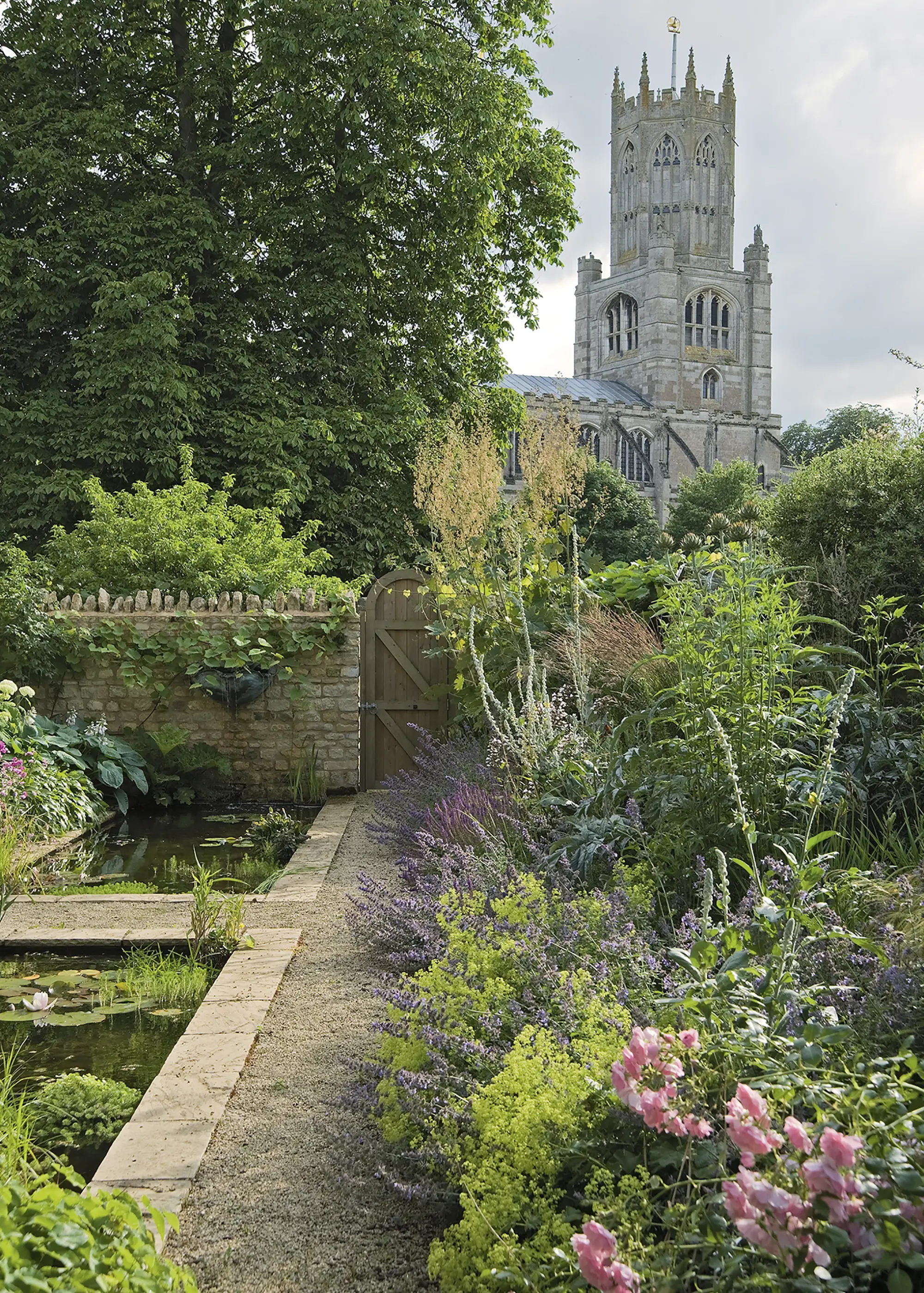
Take inspiration from the wider landscape, including surrounding buildings, like in this project by Robert Myers Associates. The hardscaping is in keeping with the picturesque church view, while the planting echoes that of the trees and bushes outside of the boundary
In many cases, an arboriculturist will recommend that protective measures are put in place to safeguard trees during construction, ensuring the canopy and roots are safe. Aside from trees, you may wish to retain established planting by carefully digging out at the root and relocating them into new beds, or reuse materials such as paving.
Much of the hard landscaping will be tied into functions such as walkways and patios, so it’s wise to begin with the structural layout and develop planting from there. Investing in mature plants will allow you to create a more instant result, but this will be expensive.
A more cost-effective option is to buy younger plants and allow them to naturally bed in. “Rather than considering it a waiting game for a new garden to mature, we would remind clients that one of the greatest joys of a garden transformation is to watch it develop,” says James.
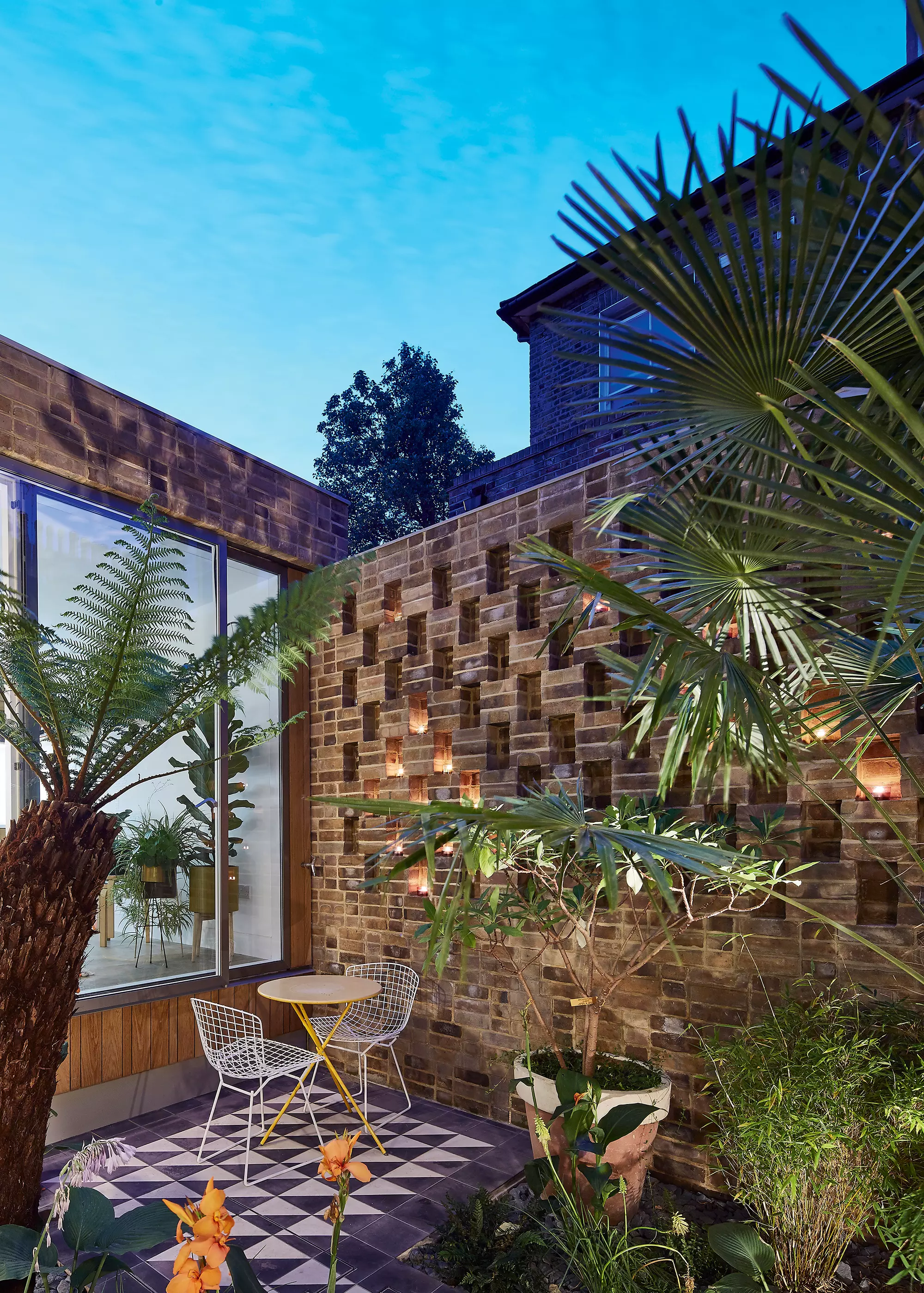
This new build in North London was constructed on a compact plot. Paul Archer Design created a hidden courtyard with fully glazed doors that make the outdoor zone feel like an additional room. Photo: Kilian O’sullivan
Another option is to carry out planting early in the schedule or in advance of a long build so plants have time to grow prior to construction being completed. “Coordination between the landscape and building teams is crucial to avoid damage,” advises Robert.
It’s a good idea to enhance biodiversity with your choices. “Incorporate native plants, pollinating plants, water bodies and wildlife habitats to promote biodiversity and attract beneficial insects, birds, and other wildlife,” says Robert, who suggests low-water demand varieties and those resilient to heat, flooding and other effects of climate change are increasingly important.
“Consider the type of wildlife that comes into a garden. If you’re looking to help bee colonies, plant bee-friendly flowers in a window box or a pot by the door,” says author and gardener Sarah Raven. “Angelica Gigas has beautiful aromatic flower heads that are loved by bees, butterflies, and birds, which also love the purple-blue flowers of Lavandula Angustifolia ‘Hidcote’.
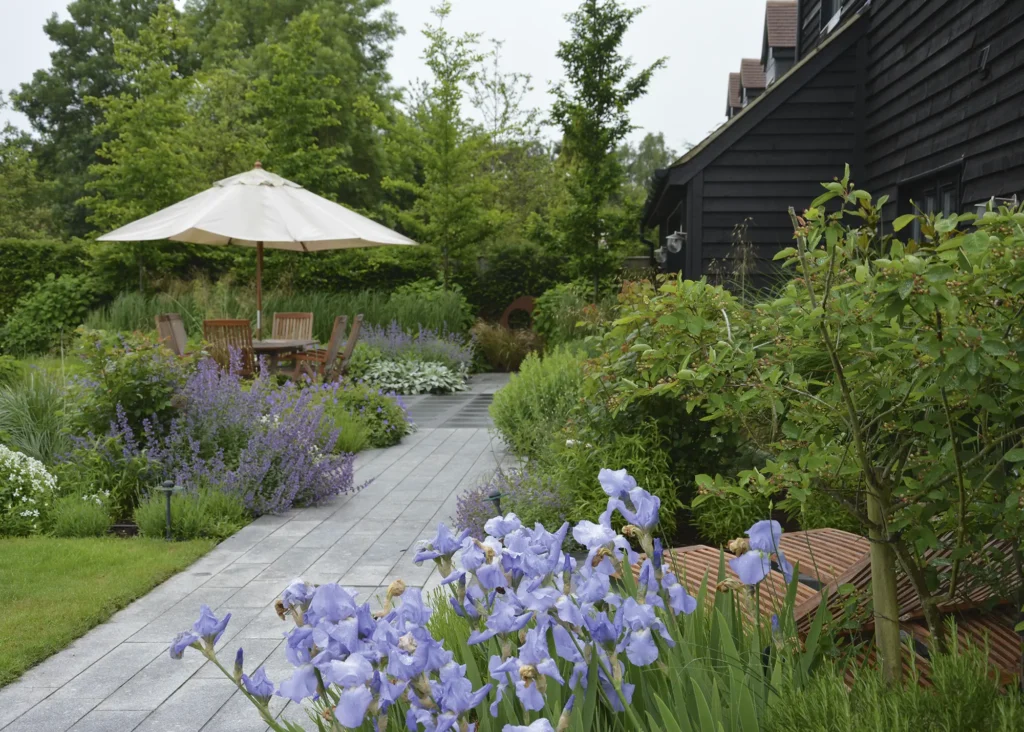
James Scott, managing director and principal designer at The Garden Company, designed this garden to sit comfortably within a farmland setting while maintaining a modern feel. Trees and clipped hedges were used to strengthen the geometry before the areas were over-layered with softer, more naturalistic planting. Grasses provide clever screening and a wildflower meadow is good for local wildlife. This garden cost around £50,000
The most floriferous of the compact lavenders, it is incredibly reliable and rich in pollen and nectar for much of the summer. Verbena Bonariensis creates a haze of purple flowers at head height from late summer to autumn, attracting butterflies. Leave the dead stalks until spring as this helps protect seeds from finches and offers protection from cold, wet weather.”
The preferred style of garden and soil type will influence planting, too. Low-maintenance grasses, plants and flowers such as Foxgloves and wallflowers are good for beds in a contemporary design, while a cottage garden mix of zinnia, cosmos and malopes will create a more traditional look. The style of your garden comes down to the property’s style, surroundings, and your preferences.
EXPERT VIEW How long do plants take to bed?James Scott, managing director and principal designer at The Garden Company, offers these tips on when to plant different elements: Grass can be laid at any time of year, as long as the weather is not too hot or cold. In the summertime, new grass needs lots of watering so it’s best not to lay it just before a planned holiday. Herbaceous plants establish very quickly in the right conditions and, given a suitable watering schedule, they can bed in after one season. Shrubs and trees take longer to establish than other plants. They can take several years to fully bed in and during that time they need additional care, including staking and watering. |
The price of landscaping, materials and design fees varies depending on project scope, location, plot, specification and work required. Discuss budget allocations with a garden designer early on.
As a guide, consider allocating your garden budget as follows:
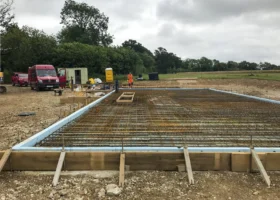
Comments are closed.